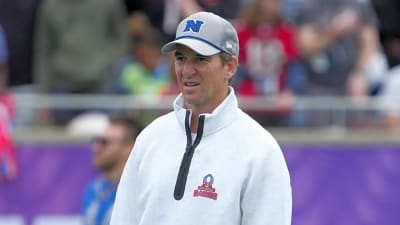I’m a little bit of a snowboard gear nerd. Not as much as that one guy you know, but I love riding different snowboards throughout the season. I’ve come a long way from having just my Nitro Team in the closet.
Not every board works in every situation, though. Here are the boards I rode for the 2024-2025 season.
Jones Mind Expander
Rode at: Whitefish Mountain Resort, Montana
I brought my Skeleton Key into Stumptown Snowboards to get waxed, and I left with a Jones Mind Expander with Nitro Team bindings.
Hey, when in Montana, why not?
The Mind Expander has a ton of float to offer. It’s advertised as an all-mountain board, and while that holds true, it wasn’t the easiest board to carve. One thing stood out to me above all else though: the sidecut.
One of the best things about Whitefish is how wide open it is. If you catch it on the right day, you’ll have the entire width of the run to play with. The Mind Expander’s side cut allowed me to hold my edge with ease. No chattering, minimal leg fatigue. Just a smooth ride from one side of the trail to the other.
Jones Tweaker
Rode at: Sugar Mountain, North Carolina
I rode the Tweaker in 60 degree weather in North Carolina. The snow was sticky and slushy. I rode through a mud puddle more than once. To give it a more comprehensive review, I’m going to need to ride it in a better setting.
But dang, was this thing fun. Presses. Tailblocks. 360s. 50-50s.
The Tweaker was built to excel in speeds between 25 and 30 miles per hour, Jeremy Jones told me in a phone call. For the smaller mountains on the east coast, this is the ideal board for that.
Burton Skelton Key (2019)
Rode at: Sun Valley, Rotarun, Magic Mountain, Soldier Mountain
If I could only ride one snowboard for the rest of my life, it would be the Skeleton Key. I bought mine in 2020, just at the beginning of the COVID-19 pandemic, when retailers had massive sales on everything because they thought we might never make a frivolous purchase again.
Marketed as a freeride board, the Skeleton Key features camber under foot and rocker in the nose, giving you that float you need in powder. There’s more pop in the tail than there is in the nose, and if you’re riding in powder, I tend to shift my stance back a bit. It’s rated as a medium stiffness, but Burton boards always seem to be a little bit stiffer than most.
I’ve ridden this thing everywhere from the terrain parks of Appalachian Ski Mountain to the sidecountry at Brighton Resort and Powder Mountain. While a stiffer nose makes it tougher to pull off tricks like nollies or nose presses, I don’t hesitate bringing it into the park, and neither should you.
WNDR Alpine Shepard Tour Split
Rode at: New Hampshire, Black Mountain of Maine
This is just the third splitboard I’ve used in my life, and the first one was a Burton that was released during George W. Bush’s administration.
The Shepard Tour is the splitboard version of Time Magazine’s top inventions of the year. The shape is built for powder. However, I live on the east coast, and so the days I am splitboarding to reach powder are limited. It’s a nimble board that handles east coast hard-pack with ease. It’s also incredibly poppy for a split. I was shocked at how much air I was able to get off of simple rollers.
The board features Spark R&D latches and clips. It’s much more nose than tail. That’s pretty common for splitboards, but if you plan on using this largely in pounds or in a place that has limited powder, I might recommend sizing down from your typical board size.
Check out my full review of the Shepard Tour here.
Dinosaurs Will Die MaeTier
Rode at: Sugar Mountain, Whitefish, Pats Peak, Bromley, Loon Mountain
It’s really, really hard to fall on this board.
You know that feeling when you’re jelly-legged at the end of a day? Or even more so, at the end of a multi-day trip? You see a side hit, you decide you want to launch it, but those tiny muscles in your legs make a decision on their own that they don’t want to work. So you catch your toes, bail super hard. The only thing to repair your bruised pride is four-six Montucky Cold Snaps.
The MaeTier is protection from all of that.
Really, I’ve tried it all, sending small cliff drops and side hits at irresponsible points in the trip. So long as I remembered the basics – knees bent, chest up – the MaeTier did the rest. It’s called the MaeTier because the width is a bit meatier than its sister, the Maet. That means there’s more surface area
I rode this board in powder. It’s not a powder board, but it will hold its own if this is the only board you’ve packed for a trip.
Bottom line: this one’s fun. Read my full review here.
Brackishco Resort Ripper
Rode at: Bromley, Sunday River, Waterville Valley
How many times do you get to ride a board from a small, North Carolina-based company? The answer: Not many.
I bought this from Brackishco founder Lynwood Cherry after interviewing him for a story. I had no idea what to expect, but after a brief adjustment period during an early-season day at Sunday River, I came to really appreciate the stiffness of the board in the icy, chunky November snow.
Whitspace Freestyle Shaun White Pro
Rode at: Wintergreen, Waterville Valley, Black Mountain of Maine, Montage Mountain
In complete honesty I wasn’t sure how much I would like this board. After riding it for the first time, I quickly realized that there was a reason Shaun White’s brother Jesse spent so much time in Burlington, Vermont with the Burton crew while Shaun was still riding for Burton.
I rode a 162W at Wintergreen in Virginia for the first time. Normally, I would never bring a board meant for competitive slopestyle and halfpipe riders to such a small mountain. One thing I quickly realized though, was that a board meant for digging into an icy halfpipe does a fantastic job at digging into an icy black diamond in early January.
A month later, this was the only solid board I packed for a trip to New England. It dumped 8 inches of powder at Waterville Valley Resort in New Hampshire. While it wouldn’t have been my first choice for a powder day, I set my bindings back a bit and had one hell of a day.
Like I said, this board was built for contest riders, so it’s a stiff one. If you’re looking to jib, look elsewhere.
Read my full review here.
More must-reads:
- Why the Yankees will likely part with Cody Bellinger
- Billy Napier, Florida at a crossroads ahead of bout with rival Miami
- The 'NFL 200-touchdown-pass Club' quiz
Breaking News
Trending News
Customize Your Newsletter
 +
+
Get the latest news and rumors, customized to your favorite sports and teams. Emailed daily. Always free!








